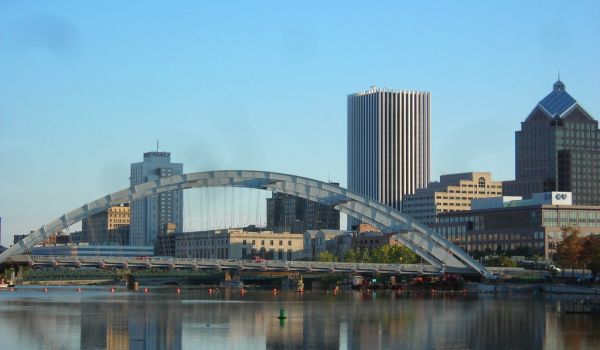It’s chilly out there, so this week we’re taking a look at a handful of Next City stories that focus on how cities deal with the snow and ice. Read on — preferably with a hot mug of something in hand. Brr! —Next City staff
Roads Go Low-Sodium
Salting roads in winter is an essential safety measure, but all that salt has devastating environmental consequences. In early 2020, Valerie Vande Panne looked at three cities that have made strides to reduce the amount of salt used on roads — and thus reduce the salt washed into waterways. One of those places is Lake George, New York, a key driver of the Adirondack region’s $2 billion a year tourism economy. To protect the lake and its wildlife, the city began using a brine — salt mixed with water, applied before a snowstorm — and has succeeded in cutting salt use by 30%. The change also saves the county $10,000 a year.
Since then, the city has emerged as a leader in salt reduction best practices. This month, Warren County Department of Public Works Superintendent Kevin Hajos was named to join the Adirondack Road Salt Reduction Task Force, a statewide force created this year. The task force will create statewide road salt reduction recommendations — many, no doubt, inspired by Lake George’s innovations.
Syracuse’s Sidewalk Takeover
In Syracuse, New York, like in many cities, keeping sidewalks clear after a snowstorm is the responsibility of the homeowner whose property abuts the sidewalk. But, as in most cities, getting hundreds or thousands of property owners to shovel their walks proved to be an exercise in futility — especially in Syracuse, one of the snowiest cities in the world, where it snows more than 10 feet a year, on average.
In 2018, as Cinnamon Janzer reported for Next City last year, the city tried something new: it said it would take over shoveling responsibilities for 40 miles of sidewalks. “What’s the easiest way to guarantee it will be cleared? If we do it ourselves,” the city’s chief operating officer, Corey Driscoll Dunham, said at the time. The program was controversial, but ultimately has been expanded: in June 2021, the city officially approved a municipal sidewalk takeover program. The city would take over maintenance and shoveling of all city sidewalks, funded by a modest fee on property owners. (Sidewalk maintenance was also previously the responsibility of the property owner, and maintenance costs can stretch into the thousands of dollars.) In addition, in December of this year, the city voted to expand the shoveling program to cover 100 miles of sidewalks, a win for winter pedestrians and cyclists alike.
The Winter City
Five years ago, the city of Edmonton approved “winter design guidelines” that were meant to help the chilly city design comfortable outdoor spaces. As Jen Kinney reported, those guidelines included planting trees to block the wind, designing seating areas that catch the sun, and even installing heaters at bus stops.
But the guidelines were just guidelines, not codified into city law. By 2020, it was unclear how many businesses and developers had embraced the winter — one article noted that “only a handful” of restaurants had created year-round outdoor dining spaces, for example.
But the pandemic changed all that. New regulations easing the cost and hassle of winterizing a patio have caused Edmonton’s outdoor dining options to explode, even through the worst of winter.
















